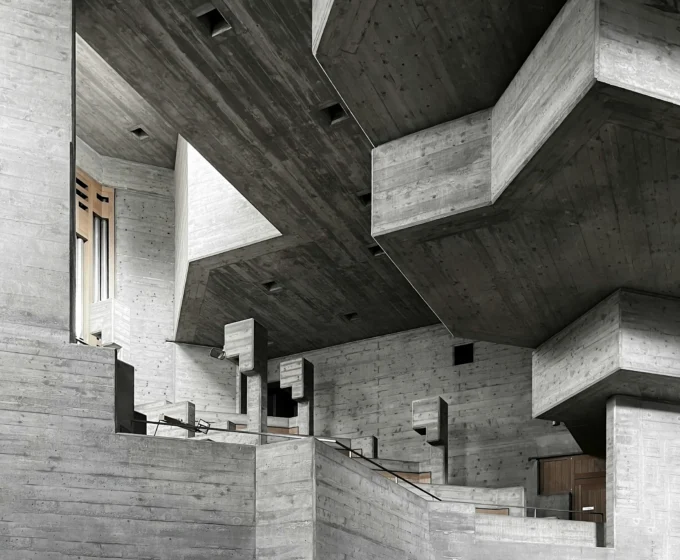- Home
- Articles
- Architectural Portfolio
- Architectral Presentation
- Inspirational Stories
- Architecture News
- Visualization
- BIM Industry
- Facade Design
- Parametric Design
- Career
- Landscape Architecture
- Construction
- Artificial Intelligence
- Sketching
- Design Softwares
- Diagrams
- Writing
- Architectural Tips
- Sustainability
- Courses
- Concept
- Technology
- History & Heritage
- Future of Architecture
- Guides & How-To
- Art & Culture
- Projects
- Interior Design
- Competitions
- Jobs
- Store
- Tools
- More
- Home
- Articles
- Architectural Portfolio
- Architectral Presentation
- Inspirational Stories
- Architecture News
- Visualization
- BIM Industry
- Facade Design
- Parametric Design
- Career
- Landscape Architecture
- Construction
- Artificial Intelligence
- Sketching
- Design Softwares
- Diagrams
- Writing
- Architectural Tips
- Sustainability
- Courses
- Concept
- Technology
- History & Heritage
- Future of Architecture
- Guides & How-To
- Art & Culture
- Projects
- Interior Design
- Competitions
- Jobs
- Store
- Tools
- More
The Ultimate Guide to Architectural Travel: Where to Go for Stunning Designs and Hidden Gems
Discover the ultimate guide to architectural travel, where history, artistry, and culture converge through iconic landmarks and hidden gems worldwide. From ancient wonders to modern masterpieces, explore breathtaking destinations and styles that tell the stories of civilizations. Plan your journey with expert tips and immerse yourself in the beauty and brilliance of global architectural heritage.

Traveling isn’t just about ticking destinations off a list; it’s about immersing ourselves in the stories, cultures, and artistry that shape each place. For architecture lovers, every city becomes a canvas of history and innovation, where ancient wonders and modern masterpieces coexist in harmony. From towering cathedrals to sleek skyscrapers, the world is brimming with architectural gems waiting to be explored.
Whether we’re drawn to the intricate details of Gothic architecture, the clean lines of minimalism, or the bold creativity of contemporary structures, there’s a destination that speaks to our passion. Let’s embark on a journey through some of the most awe-inspiring architectural hotspots, uncovering the beauty and brilliance that define each one.

Table of Contents
ToggleThe Importance Of Architectural Travel
Architectural travel connects us to the artistry and history of destinations. It provides insights into cultural legacies through design and structure.

Exploring Culture Through Architecture
Architecture offers a lens to understand the cultural identity of a place. Structures like the Gothic cathedrals in Europe or the intricate temples of Southeast Asia highlight spiritual values and artistic traditions. By observing local building techniques and materials, we uncover stories about regional customs, climate adaptation, and societal evolution. Exploring these elements deepens our connection to the culture itself.
Enhancing Your Travel Experience
Architectural travel enriches our journeys by adding depth to exploration. Landmarks like the Eiffel Tower in Paris or the Sydney Opera House combine aesthetic appeal and symbolic importance, leaving lasting impressions. Walking through historic districts or modern architectural marvels provides context for a city’s evolution while immersing us in its environment. This multifaceted experience elevates how we view and remember each destination.
Top Global Destinations For Architectural Wonders
Architectural travel opens pathways to explore iconic structures worldwide. Each continent offers unique styles, stories, and innovations that define its cultural heritage and creativity.

Europe: Timeless Elegance and Historical Marvels
Europe boasts an unmatched blend of historical and modern architecture. Gothic cathedrals, such as Notre-Dame de Paris in France and Cologne Cathedral in Germany, highlight intricate detailing and structural brilliance. Renaissance masterpieces like Florence’s Duomo demonstrate artistic grandeur, while Baroque palaces exemplify opulence. Modernist landmarks like Barcelona’s Sagrada Família by Antoni Gaudí showcase bold innovation.
The capitals of Europe highlight architectural diversity. London features the Gothic-inspired Westminster Abbey alongside contemporary marvels like The Shard. Rome offers classical landmarks like the Colosseum and the Pantheon, reflecting Ancient Roman engineering. Amsterdam’s canals and gabled houses represent 17th-century Dutch urban planning.
Asia: Intricate Designs and Modern Ingenuity
Asia combines ancient traditions with ultramodern skyscrapers. Temples like Angkor Wat in Cambodia and the Taj Mahal in India display intricate craftsmanship and cultural symbolism. Pagodas in Myanmar and Japan’s Kinkaku-ji (“Golden Pavilion”) reveal delicate, harmonious designs. In contrast, Middle Eastern marvels like Sheikh Zayed Grand Mosque in Abu Dhabi reflect Islamic artistry and monumental scale.
Modern Asia offers some of the world’s tallest structures and futuristic designs. Dubai’s Burj Khalifa redefines engineering limits, while Marina Bay Sands in Singapore integrates innovation with luxury. Tokyo blends high-tech urbanity with architectural minimalism, seen in the Asakusa district and Ginza’s flagship store designs.
Americas: Diverse Architectural Landscapes
The Americas feature diverse styles shaped by indigenous, colonial, and contemporary influences. Ancient sites like Machu Picchu in Peru and Chichen Itza in Mexico reveal the engineering expertise of pre-Columbian civilizations. In contrast, cities like Washington, D.C. and Buenos Aires retain neoclassical and Art Deco aesthetics from European styles.
North America leads in modern skyscrapers and design experimentation. New York’s Empire State Building and Guggenheim Museum showcase engineering prowess and artistic ambition. Frank Lloyd Wright’s Fallingwater embodies harmony with nature, while Latin America surprises with creative works like Brasilia’s modernist designs by Oscar Niemeyer. Structures like Santiago Calatrava’s Oculus in New York unite public use with artistic vision.
Must-Visit Architectural Landmarks
Architectural landmarks offer a glimpse into the creativity and culture of civilizations throughout history. From ancient marvels to groundbreaking modern designs, these structures captivate travelers worldwide.

Ancient Monuments Worth Exploring
Ancient monuments connect us to bygone eras, reflecting engineering mastery and cultural significance. The Great Pyramid of Giza in Egypt, built in 2560 BCE, showcases precision and scale unmatched by many modern structures. In Greece, the Parthenon, a 5th-century BCE temple, exemplifies Classical Greek architecture. The Terracotta Army in Xi’an, China, demonstrates intricate craftsmanship from 210 BCE as it stands guard over Emperor Qin Shi Huang’s tomb. Meanwhile, India’s Ajanta Caves, carved between 2nd century BCE and 480 CE, depict Buddhist art and architecture with stunning murals and statues. These sites embody the ingenuity of ancient civilizations.
Iconic Modern Structures Around The World
Modern architecture pushes boundaries with innovative materials and daring designs. The Burj Khalifa in Dubai, standing at 2,717 feet since 2010, redefines skyscraper engineering and serves as a global icon. The Guggenheim Museum in Bilbao, Spain, designed by Frank Gehry in 1997, blends art with architecture, featuring curved titanium forms. In Australia, the Sydney Opera House, completed in 1973, remains celebrated for its shell-like structure. Copenhagen’s Øresund Bridge, opened in 2000, combines art and functionality with a unique cable-stayed design stretching over 5 miles. Each landmark represents contemporary architectural brilliance and global cultural influence.
Tips For Planning Your Architectural Journey
Planning enhances any architectural travel experience by ensuring we maximize time and explore meaningful sites. Preparation transforms a trip into a seamless journey through design and culture.

Research And Creating An Itinerary
Research lays the foundation for discovering impactful architectural sites. Start by identifying destinations known for their unique styles or significant landmarks. Examples include Barcelona’s Sagrada Família, Kyoto’s Golden Pavilion, or New York’s Chrysler Building.
Organize your plans by grouping attractions by proximity to minimize travel time. Allocate sufficient time per site based on its size or cultural importance. For instance, reserve half a day for sprawling structures like the Forbidden City or Angkor Wat. Trusting reputable sources like UNESCO World Heritage lists or architectural travel guides ensures a well-rounded selection.
Best Travel Times To Explore Architectural Gems
Timing enhances the experience of exploring remarkable architecture. Visit outdoor landmarks, like Machu Picchu or the Taj Mahal, during seasons with favorable weather conditions to enjoy the details comfortably. Explore crowded urban landmarks, such as the Colosseum or Eiffel Tower, during off-peak hours or weekdays to avoid long lines.
Consider seasonal events or festivals celebrating architecture or culture for added enrichment. Examples include Chicago’s Architecture Biennial or Holland’s tulip season showcasing flower-infused structures. Aligning travel with these moments deepens our connection to the design and history of each destination.
Hidden Architectural Gems You Shouldn’t Miss

1. Central Park’s Bethesda Terrace, New York City, USA
Nestled in the heart of Manhattan, the Bethesda Terrace showcases intricate designs blending nature and art. The highlight is the arcade’s Minton tile ceiling, featuring over 15,000 hand-crafted tiles. Its 19th-century architecture offers a serene urban retreat.
2. Fishermen’s Bastion, Budapest, Hungary
This neo-Gothic and Romanesque lookout towers over the Danube River, providing panoramic views of the city. Completed in 1905, its seven stone towers represent the Magyar tribes, making it both visually stunning and historically symbolic.
Many travelers choose to admire the towers not just from land but also from the water, with a Danube river cruise offering a memorable architectural perspective as you glide past the city’s historic skyline.
3. Wieliczka Salt Mine, Kraków, Poland
Dating back to the 13th century, this underground marvel includes chapels, corridors, and sculptures carved entirely from salt. The Chapel of St. Kinga, adorned with salt chandeliers, exemplifies human ingenuity.
4. Jantar Mantar, Jaipur, India
Built in the early 18th century, this UNESCO World Heritage Site hosts 19 astronomical instruments. Its geometric precision highlights India’s historical advancements in science and innovation.
5. Tottori Sand Museum, Tottori, Japan
The world’s first museum dedicated to sand sculpture, this structure changes its exhibits annually, featuring intricate designs influenced by global cultures. Its ephemeral displays merge architecture and artistry.
6. Røros, Norway
This 17th-century mining town, a UNESCO World Heritage Site, features wooden houses and narrow streets. Its preservation ensures visitors an authentic glimpse into Scandinavia’s architectural past.
7. Zabid, Yemen
Once a cultural hub, this ancient city showcases traditional Yemeni architecture with whitewashed homes and intricate detailing. It represents a key piece of Islamic history and medieval urban design.
8. Curutchet House, La Plata, Argentina
Designed by Le Corbusier in 1949, this residence exemplifies modernist architecture with its innovative use of space and light. It’s a rare South American masterpiece by this renowned architect.
Conclusion
Architectural travel offers unparalleled opportunities to delve into the artistry, history, and culture of diverse destinations. By exploring iconic landmarks, hidden gems, and unique styles, we immerse ourselves in the stories societies leave behind through their structures. Each journey becomes an enriched experience, connecting us to the ingenuity and heritage of civilizations worldwide.
We find that cities pulsate with narratives through their architecture, whether ancient temples, modern skyscrapers, or a harmonious blend of the two. By thoughtfully planning trips around these remarkable spaces, we create deeper bonds with the destinations we visit.
- architectural journeys
- architectural landmarks travel
- Architectural Tourism
- Architectural travel guides
- architecture and design travel
- architecture travel itinerary
- architecture-influenced travel experiences.
- architecture-inspired travel
- architecture-themed vacations
- best architecture travel apps
- best cities for architecture lovers
- discover hidden architecture
- famous architectural sites
- globally renowned architecture sites
- hidden architectural gems
- historic architectural sites
- iconic architectural travel destinations
- modern architecture tours
- off-the-beaten-path architecture
- secret architectural spots
- Stunning architectural destinations
- top architectural travel spots
- ultimate architectural travel guide
- unique architecture travel
- world's best architecture locations
Submit your architectural projects
Follow these steps for submission your project. Submission FormLatest Posts
Istanbul: A Living Museum of Architecture
Istanbul is a city where East meets West, offering a rich architectural...
Top Architectural Wonders You Must See on Your Next Vacation for an Unforgettable Journey
Discover breathtaking architectural wonders across history and innovation on your next vacation....
Discover 10 Mosques in the Arabian Peninsula: Architectural Wonders and Spiritual Heritage
Discover the allure of the Arabian Peninsula through ten remarkable mosques that...
The Best Places to Travel in 2025: Top Destinations for Unforgettable Adventures
Discover the top travel destinations for 2025, from iconic hotspots like Kyoto...












Leave a comment